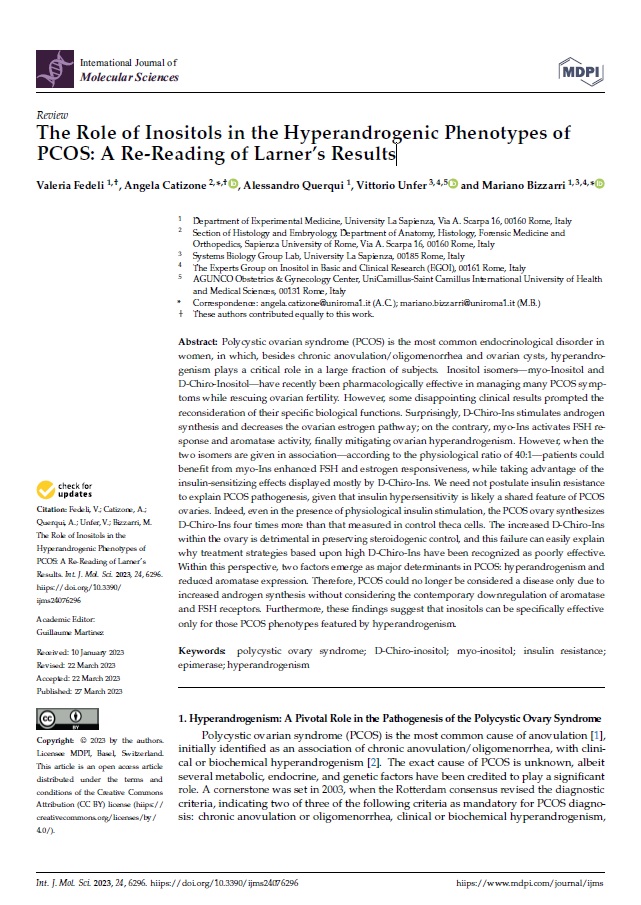Authors:
Valeria Fedeli, Angela Catizone, Alessandro Querqui, Vittorio Unfer, Mariano Bizzarri
Polycystic ovarian syndrome (PCOS) is the most common endocrinological disorder in women, in which, besides chronic anovulation/oligomenorrhea and ovarian cysts, hyperandrogenism plays a critical role in a large fraction of subjects. Inositol isomers—myo-Inositol and D-Chiro-Inositol—have recently been pharmacologically effective in managing many PCOS symptoms while rescuing ovarian fertility. However, some disappointing clinical results prompted the reconsideration of their specific biological functions. Surprisingly, D-Chiro-Ins stimulates androgen synthesis and decreases the ovarian estrogen pathway; on the contrary, myo-Ins activates FSH response and aromatase activity, finally mitigating ovarian hyperandrogenism. However, when the two isomers are given in association—according to the physiological ratio of 40:1—patients could benefit from myo-Ins enhanced FSH and estrogen responsiveness, while taking advantage of the insulin-sensitizing effects displayed mostly by D-Chiro-Ins. We need not postulate insulin resistance to explain PCOS pathogenesis, given that insulin hypersensitivity is likely a shared feature of PCOS ovaries. Indeed, even in the presence of physiological insulin stimulation, the PCOS ovary synthesizes D-Chiro-Ins four times more than that measured in control theca cells. The increased D-Chiro-Ins within the ovary is detrimental in preserving steroidogenic control, and this failure can easily explain why treatment strategies based upon high D-Chiro-Ins have been recognized as poorly effective. Within this perspective, two factors emerge as major determinants in PCOS: hyperandrogenism and reduced aromatase expression. Therefore, PCOS could no longer be considered a disease only due to increased androgen synthesis without considering the contemporary downregulation of aromatase and FSH receptors. Furthermore, these findings suggest that inositols can be specifically effective only for those PCOS phenotypes featured by hyperandrogenism.

